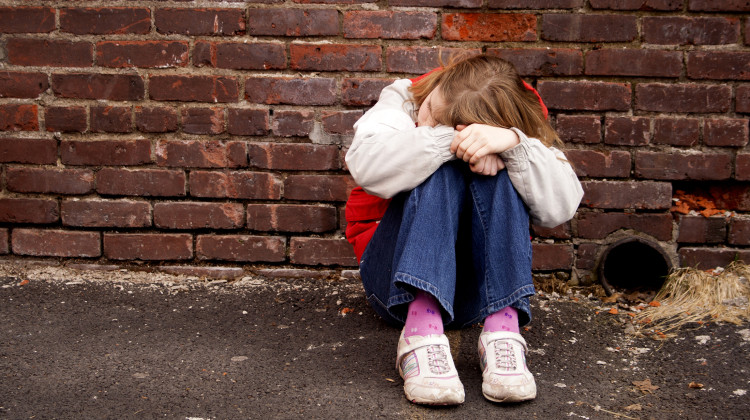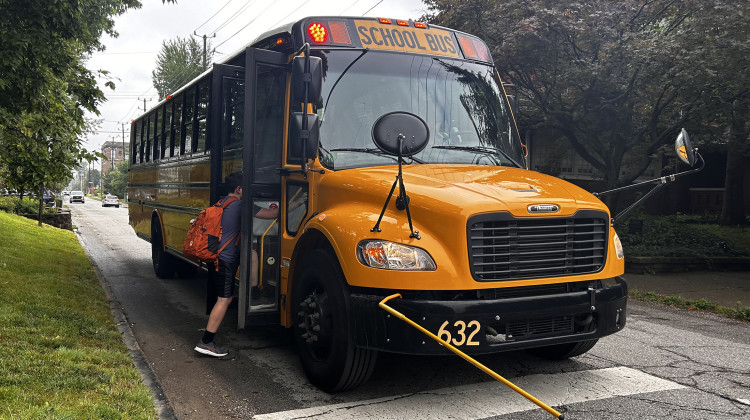
Indiana's Child Care Finder is free for anyone to use to find daycare or early education options.
Marjon Besteman / PixabayFinding child care in Indiana is a challenge for many families, especially in the last few years. In response, state lawmakers have proposed several initiatives to increase access to high-quality early childhood education and safe daycares.
The goals are to create more pre-K seats, teachers and classrooms and make more people able to afford the cost.
Only 61 percent of the children likely needing care can be served through existing capacity, according to the latest state data from Early Learning Indiana. And some options continue to shrink.
The proportion of programs serving infants or toddlers has decreased slightly from 71.7 percent to 69.6 percent from 2022 to 2023. Services during nights and weekends are also trending downward, from 26.1 percent to 24.4 percent.
To help ease the search for families looking for child care for infants up to 13-year-old students, the Indiana Family and Social Services Administration made a free online tool called Indiana Child Care Finder. It allows users to search for available care based on their needs of time of day, days of the week including weekends, age of children, and location.
Details on a provider’s critical health and safety violations, inspection reports and complaints are also available through the site.
What do I need to know before I start searching?
Before using the Child Care Finder it is helpful to know what days and times you need care and what kind of provider you are comfortable with. Care is available from an unlicensed registered ministry, licensed home, or a licensed center with a level of state quality rating. Or if you are commuting — do you want a care option near home or workplace?
“So when it comes to their schools and what when it comes to their work, it just kind of really depends on what the family needs,” said Courtney Penn, director of FSSA’s Office of Early Childhood and Out-of-School Learning. “And so that was the reason and the heart, if you will, behind creating the site to be able to do that.”
Do I qualify for federal assistance?
Financial assistance is available for qualified low-income families who need help paying for care. The Child Care Development Fund, or CCDF, is a federal and state partnership program that provides money for high-quality pre-K.
To qualify for CCDF vouchers, applicants can not earn more than 150 percent of the federal poverty level, or $45,000 for a family of four. They also must be able to show that they are working, going to school, or have a referral from the federal Temporary Assistance for Needy Families program or enrolled in the state’s IMPACT job training program. The child also needs proof of citizenship.
Users can search with filters in Child Care Finder to see providers who accept CCDF vouchers.
You can apply for CCDF here. If users need help submitting paperwork, they can contact their local eligibility office. For any other questions, Penn recommends calling the 24-hour hotline 211, which has an internal partnership with FSSA.
“We want to be as supportive as possible as families are going through this process,” said Penn. "This office is poised and ready to be supportive.”
How to find a provider that takes state vouchers?
Families can also see which providers accept On My Way Pre-K vouchers. The state-funded voucher program is for families of eligible 4 year olds to use at an approved pre-kindergarten program. It is available in Allen, Jackson, Lake, Marion and Vanderburgh counties Financial eligibility requirements are the same for CCDF. You can apply here.
Quality filters
Users can also filter their search by level of Paths to QUALITY, the state’s quality rating and improvement system. All licensed child care businesses in Indiana have a rating between one and four. Each level of quality builds on the previous one. Here’s how FSSA defines each level of rating levels::
- Level 1: Health and safety needs of children met
- Level 2: Environment supports children’s learning
- Level 3: Planned curriculum guides child development and school readiness
- Level 4: National accreditation is achieved
Programs meeting Levels 3 or 4 are considered high quality. Capacity within high-quality programs represents about 48.7 percent of the state’s total capacity as of last year.
Can I find child care near my home or work?
Yes, you can find providers near a specific location, or with the On-My-Route tool, you can find providers that are on the way to work or school.
 DONATE
DONATE






 Support WFYI. We can't do it without you.
Support WFYI. We can't do it without you.